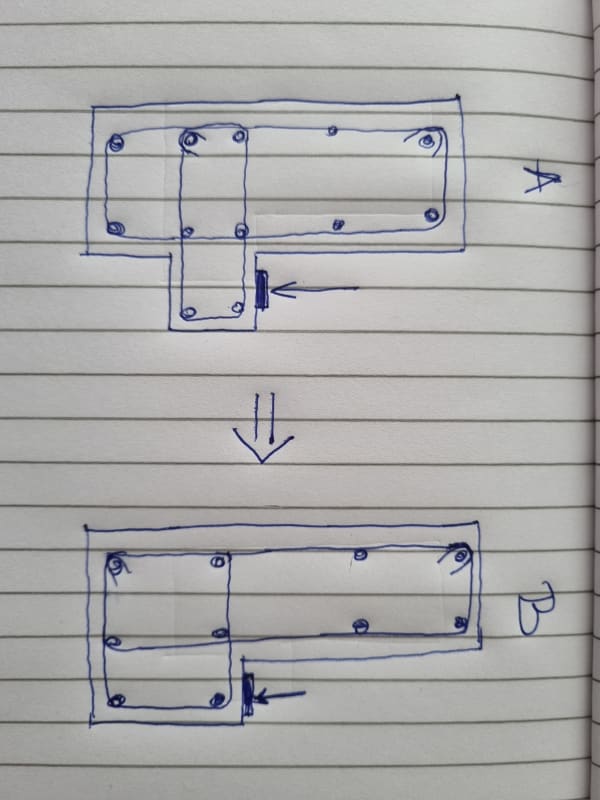derim01
Structural
- Oct 4, 2008
- 17
Continuous RC nib 150mm wide is supporting hollow core slabs. The design is passing for nib height 200mm and given rebar and ultimate loads.
In order to make work easier the contractor increased the nib height to 400mm, to make the bottom level of the nib equal to bottom level of the beam. Even though reinforcement and loads are the same, the design fails for the minimum reinforcement which shall be doubled.
Clause 11.8.5 — Asc /bd shall not be less than 0.04(fc′ /fy).(ACI318M)
I get the idea that sudden failure in concrete shall be prevented and therefore this clause is in place, but isn't it a bit harsh to penalize the increase in the height in this case? The beams are already casted. Do you have any comments or suggestions?
In order to make work easier the contractor increased the nib height to 400mm, to make the bottom level of the nib equal to bottom level of the beam. Even though reinforcement and loads are the same, the design fails for the minimum reinforcement which shall be doubled.
Clause 11.8.5 — Asc /bd shall not be less than 0.04(fc′ /fy).(ACI318M)
I get the idea that sudden failure in concrete shall be prevented and therefore this clause is in place, but isn't it a bit harsh to penalize the increase in the height in this case? The beams are already casted. Do you have any comments or suggestions?

